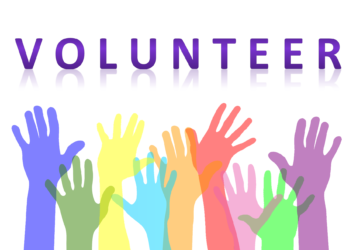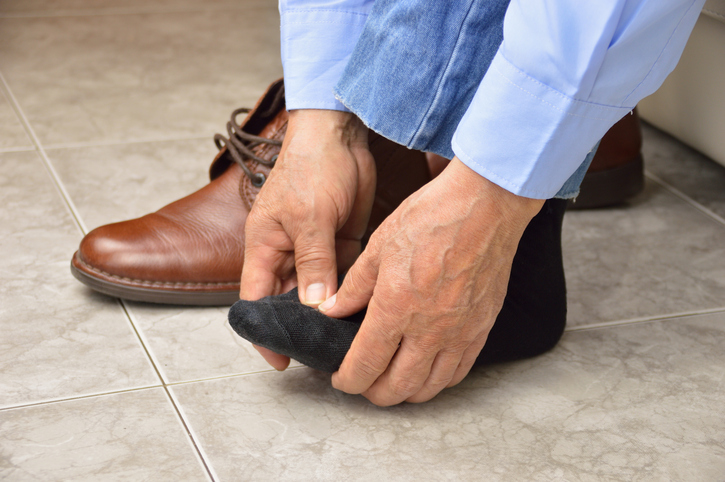Hospital Bed in San Diego:
Complete Buying Guide
Considering buying a hospital bed? If so, you’ve come to the right place.
Using a regular bed when recovering from an injury or operation or struggling with a mobility condition can be challenging. Patients are faced with uncomfortable sleep, difficult transfers, and occasional injuries.
With the right hospital bed, you evade the hurdles of typical beds, thereby enjoying a more streamlined recovery journey.
This article is your complete buying guide hospital beds in san Diego.
The beautiful thing about a patient bed is that you can use it beyond the hospital setting, be it in a rehab center, private residential, or nursing home.
Home patient beds come in varying sizes, designs, and styles, so picking the right one is an overwhelming task for most buyers. It’s for this reason that this guide has gathered everything you need to know about hospital beds.
The guide outlines the advantages of a home patient bed, types of hospital beds, how to pick the right equipment, and other crucial information to keep in mind when buying your home medical equipment.
Benefits of Hospital Beds for Homecare
Patient beds are tailored to the needs of patients who need assistance repositioning in bed as they offer more comfort, ease care giving, and allow the patient to use the extended time.
Getting a comfortable sleep when struggling with a health or mobility issue is a genuine struggle. A patient bed helps to eliminate these hassles by offering various position adjustments. You can recline the bed if sleeping flat on a mattress is difficult, or you can elevate it for health reasons.
Hospital beds ease care giving.
A caregiver can raise or lower the equipment, depending on whether the user can move out of the bed with or without help.
Lowering the bed to a considerable level enables you to step out to the floor or a mobility device such as a wheelchair. By raising the height, the caregiver doesn’t have to hunch over when providing help. Besides, these beds allow for options such as over-bed tables, eliminating the constant back pains caregivers experience when managing patients.
The fact that you can accessorize a hospital bed takes homecare a notch higher. Bed rails, whether half-length or full-length, are an excellent safety feature as they prevent the patient from rolling off the bed.
Safety at Home
Blanket supports raise sheets and blankets off the lower legs to prevent entanglement during movement while keeping away the extra weight off sensitive skin. You can equip the bed with a specialized air mattress if your loved one is vulnerable to pressure sores.
With the right hospital bed, you don’t have to stay away from your home and loved ones. A hospital bed is usually mobile, enabling caregivers to move the patients around the house and other living environs.
Whereas an older individual with mobility difficulties may require the help of a caregiver to perform day-to-day tasks, living in a nursing facility may be an uncomfortable experience for them. By allowing for home care, hospital beds support the concept of aging in familiar environments while surrounded by loved ones.
Types of Hospital Beds in San Diego
Hospital beds in San Diego are classified into three broad categories depending on the operation mode as follows:
Manual Hospital Beds
These beds lack electric capabilities. They have a crank that allows you to adjust the height, head section, and foot section position.
Manual hospital beds are more affordable than their electric competitors but demand more physical labor. They are a decent investment for short-term use, patients with a fixed position, and those that don’t require regular repositioning.
Remember that some manual beds don’t offer a range of position adjustments as electric beds. You also want to ensure that there is a caregiver with the energy and will to do the manual work before buying this bed.
Semi-electric Patient Beds
The semi-electric options incorporate both electric and manual adjustments. Typically, electric interventions allow for the adjustment of the foot and head section. A hand crank helps adjust the height.
Semi-electric patient beds are ideal for patients in need of constant head and foot section adjustments and fewer height adjustments. They are costlier than manual beds but offer you the benefit of zero manual work when adjusting the two ends.
Full-electric Hospital bed.
In full electric beds, all alterations are electrical, incredibly easing the lives of the patient and their caregivers.
The bed comes with a remote for seamless head, foot, and height modifications, making it an ideal solution for patients who require frequent positioning and caregivers with less physical strength. Loaded with these capabilities, an electric bed is costlier than a manual or semi-electric alternative but offers a great deal of convenience.
Besides the above types, there are also unique hospital beds tailored to special requirements. They include:
Low Hospital Bed
A low bed resembles the regular hospital bed except that its deck is much closer to the floor to minimize the risk of injury from falls. It’s also ideal for patients that experience difficulties when transferring out and into the bed.
An upgrade to the low bed is the hi-low bed that offers a broader range of height alterations. You can lower it close to the floor when sleeping, or a caregiver can raise it to a suitable height when providing assistance.
Bariatric Hospital Bed
If you are looking for a patient bed with a larger weight capacity, a bariatric bed could be the right choice for you. The bed is designed with a broader and heavy-duty deck to offer maximum support and comfort to heavier users. It can be fully electric or low design.
Hospital Crib
Also known as a pediatric medical crib, a hospital crib is specially made for children receiving medical care at home. This could be due to premature birth issues, neurological issues (seizure and epilepsy), developmental disabilities, among other conditions that call for special features not provided by a regular crib.
Hospital cribs have raised rails to prevent falls, with the spaces between the rails being much narrower to prevent head entrapment. You can electronically or manually adjust the head section, depending on the bed manufacturer.
How to Choose the Right Hospital Bed
Undeniably, buying a hospital bed is an incredible investment, so getting informed about the vital things to consider is imperative before making your purchase. Keep in mind the following factors:
Length of Use
Before looking into the features, consider how long your loved one will use the bed. For short-term uses, it’s advisable to get a manual or semi-electric patient bed, depending on the necessary convenience and comfort.
A full-electric bed is suitable for a patient who remains on the bed for a significant portion of the day (at least 15 hours) or intends to use it for a long time.
Mobility of the User
Your choice of a hospital bed will also rely on the mobility level of the user.
First, consider whether the patient can get in and out of bed and the amount of help they require.
Next, determine whether the bed has the necessary features to support the user’s mobility. For instance, a user who can transfer themselves or sit up will require a more standard hospital bed. In contrast, an immobile patient will require a more loaded alternative.
Size and Weight of User
The size and weight of the patient determine the bed’s size and capacity.
If the user is heavier, a heavy-duty bariatric bed is an ideal choice to support the extra weight and size. In contrast, shorter or taller patients require shortened or extended bed decks.
Pediatric patients, however, need small-sized beds designed to offer optimum comfort and safety to children.
Physical Stamina of Caregiver
It’s also important to consider the physical strength of the caregiver, chiefly when a family or friend is assigned the caregiving duties. If manual operation is too much work for the carer, a full-electric bed becomes the go-to solution.
Features
Different models offer varying features that allow for customizations geared to minimize the risk of complications, improve patient comfort, and ease the work of the caregiver. Here are features to remember when buying a hospital bed in San Diego.
Positioning
Typical patient beds offer primary positioning options, such as raising the foot and head sections. However, some alternatives take this notion further by providing special positions to meet unique requirements. They include:
-
-
- Fowler’s position: In this position, the user is laid on their back with their upper body raised to an angle between 15-90 degrees, and their knees bent or straight. It’s ideal for patients with respiratory distresses as it facilitates better chest expansion, thereby improving breathing. The position also allows users who can’t move to talk normally and eat and swallow easily.
- Trendelenburg: This position is achieved by tilting the bed deck in a way the user’s head is lower than the feet by 15-30 degrees. The patient lies flat on the bed. Commonly used during cardiothoracic surgery, the Trendelenburg position is also helpful to patients with particular heart and respiratory issues.
- Reverse Trendelenburg: Also known as Anti-Trendelenburg, this position is gained by tilting the bed so that the patient’s head is higher than the feet by 15 to 30 degrees. It’s especially useful for increased exposure during upper abdominal and prostate surgeries.
-
By relieving pressure to the head, the Anti-Trendelenburg also helps to improve respiratory functions in obese users.Avoid keeping the patient in the Trendelenburg positions for an extended period to prevent blood flow complications. If the patient has reduced mental ability or dementia, the control of these positions should be left to the caregiver.
Bed Rails
You cannot afford to overlook the importance of side rails when buying a hospital bed in San Diego. Whether full-length or half-length, side rails offer fall prevention to individuals at risk of falling off the bed, especially the sen`iors, children, and the disabled. Bed rails also act as support tools when individuals with limited physical strength are transferring into and out of bed. Users with limited mobility can hold onto the rails when turning over, lying down, or sitting up.
Storage
If you have a load of frequently used supplies, it’s wise to get a bed that suits your storage needs. Whereas the standard patient bed comprises the frame and essential components, a selection of newer models come with storage compartments for storing items such as gloves, IV stands, oxygen stands, and bedpans nearby.
Built-in Scale
A patient bed with an in-built scale or allows the attachment of the device comes in handy if regular weight measurements are required for medical reasons. They enable weight recording with minimal to zero disruptions.
Installation Services
A patient bed can be too bulky or complicated for you to install it by yourself. This is where professional installation comes into play. Before hiring an installer, seek to know if the bed seller provides installation services. Having the retailer, rather than a third party, install your bed can help reduce the overall costs significantly.
When Should You Rent a Hospital Bed?
The following are the situations where renting a bed in San Diego makes more sense than buying the equipment.
When you Need the Bed for Short-term Use
When you Need the Bed for Short-term Use
It’s more economical to rent than buy a patient bed for short-term use.
Hospital bed rental in San Diego offers an affordable solution to people in need of a bed for a relatively
shorter time, whether they are recuperating from an injury or medical operation. Upon recovery, the user can
return the bed and switch to their regular beds.
When in Need of Flexibility
When flexibility becomes critical for your recovery journey, renting a patient bed is virtually inevitable.
Your health needs may continually change as you recover, bringing in the flexibility factor.
Although different hospital beds are designed to meet varying needs, it makes no sense to buy separate beds
to meet your changing preferences. Here, renting different beds is the best alternative.
When Testing an Upgrade
If you have a knack for testing equipment before buying a hospital bed, bed rental is for you. With the availability of patient bed rental in San Diego, you can try out beds before buying a hospital bed.
Vital Safety Tips for Home Hospital Beds
Bringing a hospital bed home presents several safety challenges that you might not have considered in the past. Having selected the right equipment for you or loved one, equipping it properly and using it safely is of utmost importance. By using a patient bed safely, you keep away additional medical issues and better the environment for the surrounding people, whether relatives, friends, or hired caregivers. Thus said, take into account the following safety tips when using a hospital bed at home:
-
- Keep the side rails locked, except during transfers, to prevent dangerous falls.
- Except during movement around the house, always maintain the wheels in a locked position to prevent incidences associated with uncontrolled movements of the bed.
- Check if all the bed mechanisms and parts are working accordingly, as per the manufacturer’s or retailer’s guidelines..
- Equip the bed with communication means, primarily a bell and phone, so that the user can reach out to the caregiver easily and quickly, especially during emergencies.
- Always ensure that the remote control is within easy reach of the bed user.
- Ensure the mattress correctly fits in the bed to prevent unsafe gaps between the mattress and bed edges.
- Regularly check the motor and electrical components for debris and dirt. Dirt accumulation is a sure recipe for electrical component malfunction and failure.
Where to Rent a Hospital Bed in San Diego
If you are thinking about hospital bed rental in San Diego, look no further than Harmony Home Medical Supplies, your trusted medical equipment dealer in San Diego.
We offer affordable rentals for high-quality hospital beds by renowned medical equipment brands, including Invacare, Graham Field, and Joerns, among others.
Whether you are looking for a semi-electric, manual, or full-electric patient bed, Harmony Home Medical rentals are transparent and void of endless paperwork, vague contracts, and hidden fees.
Besides, we deliver our rental beds and have our specialists install them at our customers’ homes, providing them with superior convenience coupled with affordability.
Buying a Hospital Bed in San Diego
Considering buying a hospital bed in San Diego? Harmony Home Medical Supplies is your go-to home medical equipment distributor in San Diego.
Being in business for several years, we boast the experience and knowledge to excellently address the unique needs of our customers. We, therefore, supply hospital beds with excellent workmanship and features geared to offer our clients quality, long-lasting services.
Not sure which hospital bed suits your needs and budget? Bet on our professional, friendly, and experienced specialists to take you through the selection process so that you leave our store with a product optimally tailored to your needs. You can also order our beds online.
Turn to us for affordable, durable, reliable hospital beds, accompanied by a friendly environment and unsurpassed customer services.









